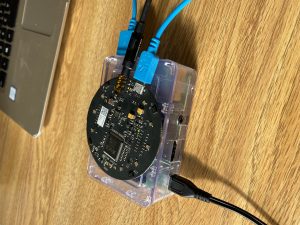This was a pretty productive week on my end. Over the weekend, I got Google speech-to-text working (made an account, got credentials, added in the code, etc) to great success! It just seems way more accurate than the other two options I had implemented originally. (This is based on the same little paragraph snippet Cambrea recorded on the respeaker for some initial testing.)
Also over the weekend (if I’m recalling correctly) I coded up our first version of speaker identification (the no-ML, no-moving version). At that point it was gratifying to see simulated transcript results with both speaker tags and voice-to-text!
And my final weekend task was preparing for the design presentation, which I delivered on Monday.
Speaking of design materials, I worked a lot on the design report document. Since I’m the group member who likes writing the most, I zipped through first drafts of a bunch of the sections which the others are going to proofread and modify for the final version. And in the trade-studies and system-description sections, I just wrote the technical bits that I was responsible for. It’s nice having this document pretty close to finished!
Finally, I started the meeting management module. This takes a new transcript update and actually updates the file corresponding to the correct meeting. I’ve finished most of it, except for the bits that interface with the database – I had to confer with the rest of the team about that.
In terms of the schedule, I’m kind of on-track, kind of ahead of schedule. I’m on track for writing the meeting manager (self-assigned due date of Monday), but as for my schedule item after that, “transcript support for multi-mic meeting,” I’ve actually been building that into the transcription the entire time, so it looks like I’ll be able to start my actual next task earlier than scheduled.
Next week I’m scheduled to deliver the meeting management module. The on-website meeting setup flow, which is my next responsibility, will also be partially completed.
